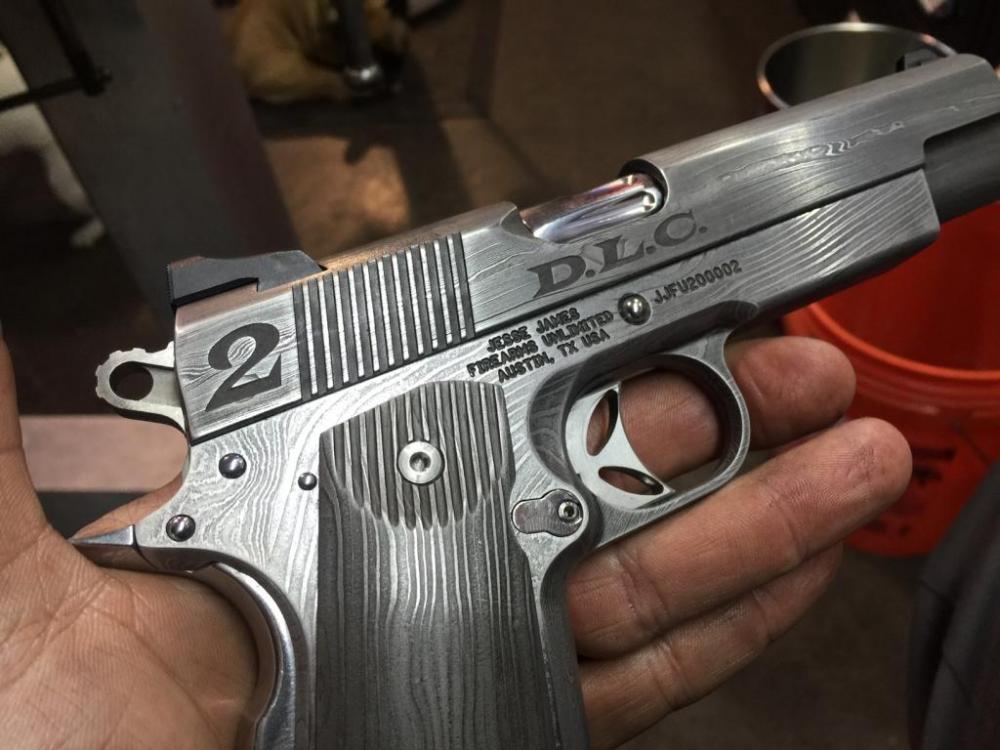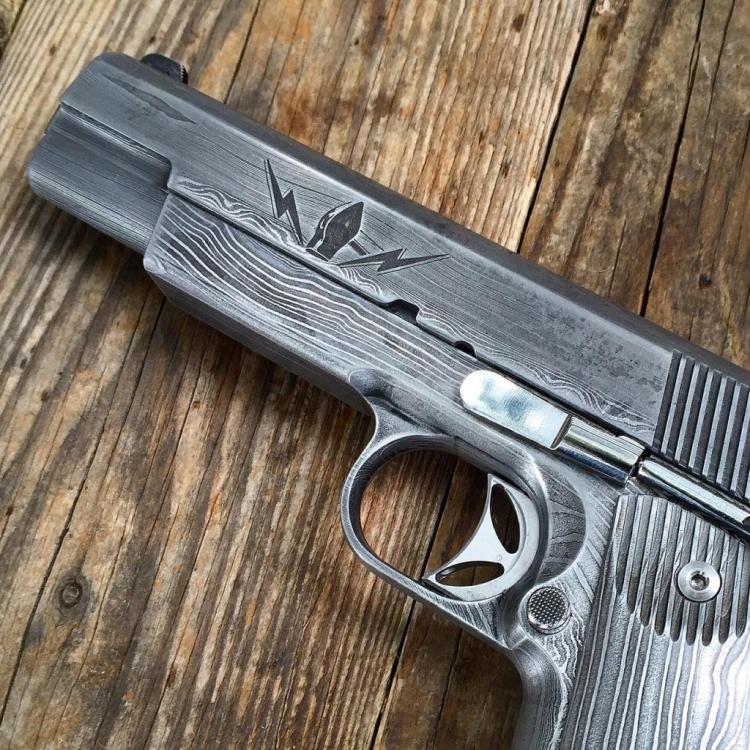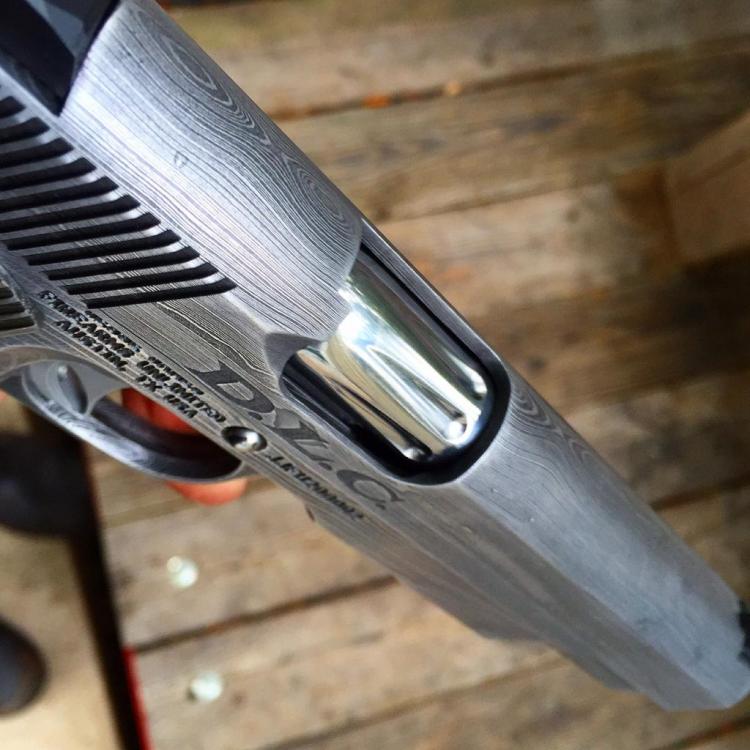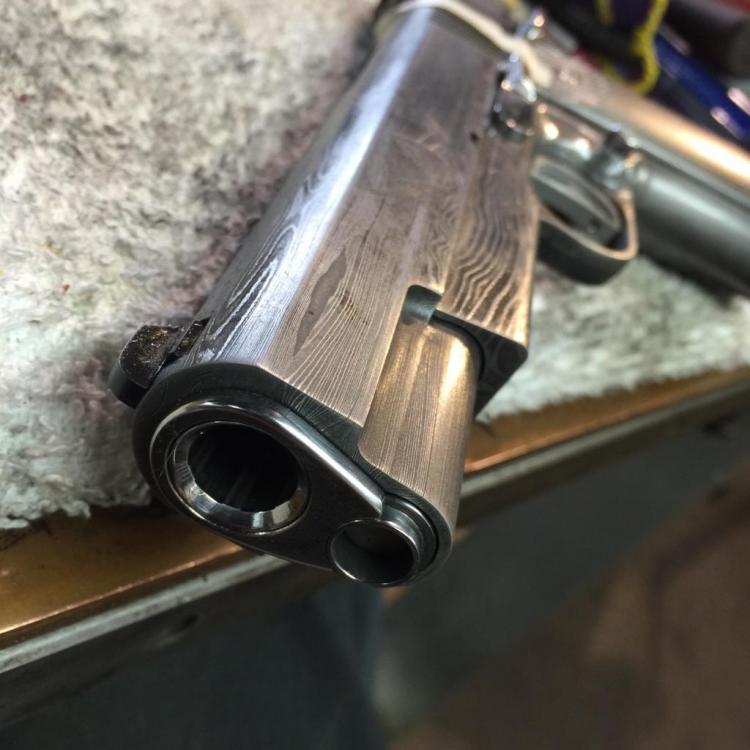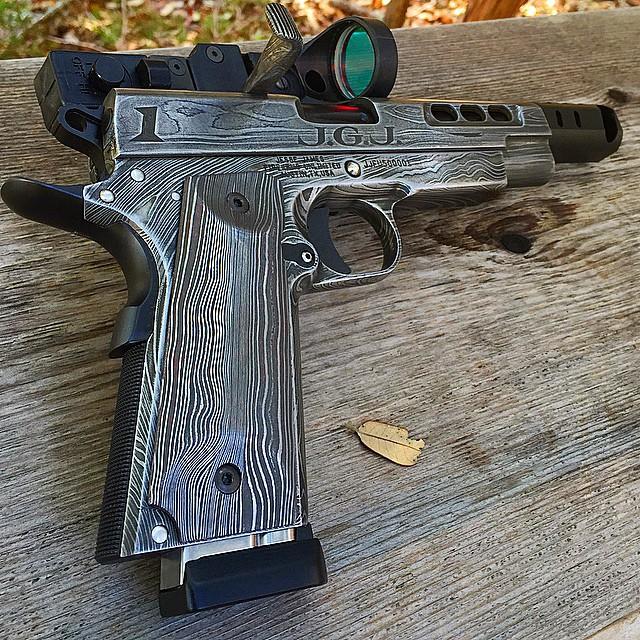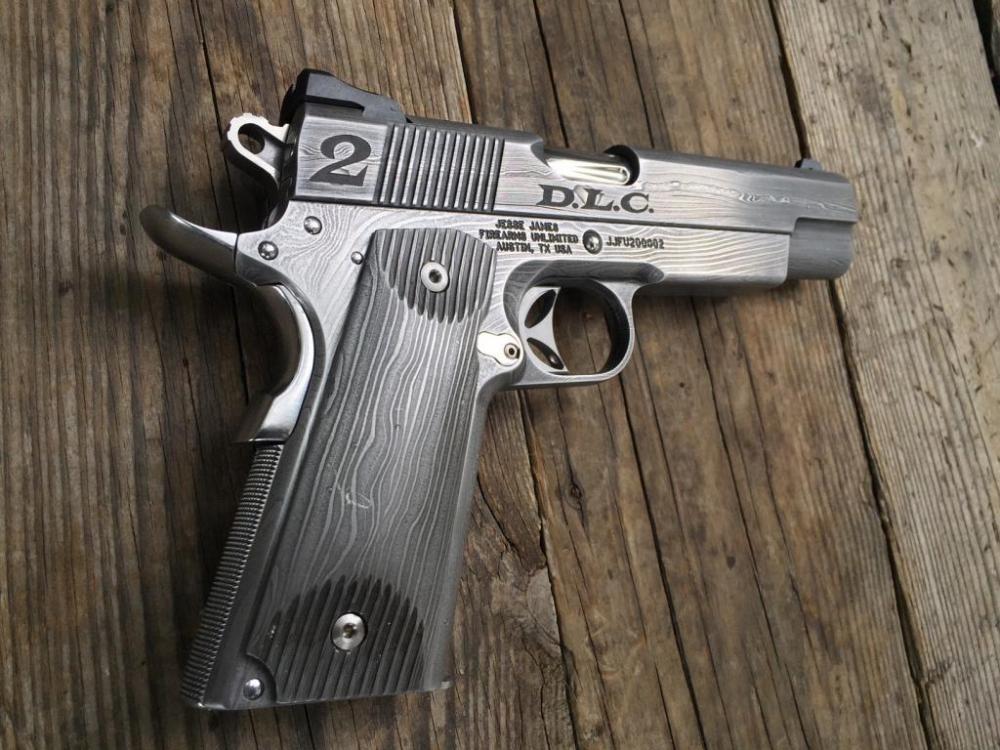-
Posts
94 -
Joined
-
Last visited
Content Type
Profiles
Forums
Articles
Gallery
Downloads
Events
Everything posted by Bubbasan
-
Seems like the over heating can cause some problems as it has for me. I use a plain handheld propane torch . I just keep annealing and hammer some until it get worked hardened and I start again . More work obviously but, product has less cracks and exfoliation of metal. Just seems to work better for me . I hate to have to repair some cracks although its part of making the material . Bubba
-
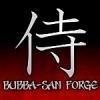
for everyone that is thinking of making a sword
Bubbasan replied to Aaron Gann's topic in Swordsmithing
Not a problem , I have knifemakers and smiths come by all the time . I teach a course in forging/ HT Japanese blades. Drop me a line if you want to drop in ... Bubba -

for everyone that is thinking of making a sword
Bubbasan replied to Aaron Gann's topic in Swordsmithing
It took me several years before I could make a decent sword . swordsmithing is difficult for a beginner. I was trained in Japan when I was stationed In Yokosuka for a few years. My sensei put many knots on my head when I did something wrong. The main problem with forging swords is : you try to use the same amount of hammer blows on each side. this decreases stress and will help keep it straight when quenching. I recently made a small 19" Naginata blade from my own Tamahagane or Orishigane as some folks call it. Has an iron core, and was the devil to forge. Started making blades in Japan when I was 18 , I am now 70. The key is ....take your time and remember forging is only a small part of making sword. You have HT claying, tempering and the dreaded polishing. Then the scabbard , fittings . In feudal japan it took 7 people to make a Japanese blade. I still learn something everyday about swordsmithing. James Anytime you want Cliff. I am retired military, so I work at my leisure . Have 2 forges 1 coal , 1 propane , 2 peter wrights one 200 lb and one 500 lb I also have Japanese anvil made by tom Clark in Steelville Mo. plenty of grinders , and a 3000 SF shop. I now live in Park hills , Mo Near Farmington , Mo. .. Bubba -
That is interesting , I picked up a nail die from Tom Clark its a piece of steel with handle and a square head die in the middle. All I did was heat some medium carbon steel rods hammer it into the hole and walla perfect square nail head . Tom used to make nails at competition . I don't think he ever lost. I will post a picture of it after I buy new camera .GRR. Just bought a brand new Fuji would not take pics smaller than 1080x 2200 ?? almost all pics are blurred as you can see in my posts. I used to have a cheap Kodak easy share and it took better pics than most very expensive cameras. check the reviews. Sorry about getting off topic , it just bugged me . James
-
Here are pics of finished shirasaya. Turned out allright. I normally don't make saya during warmer months because wood soaks up moisture and when it dries out saya can shrink and make it rattle a little . This wood was dried for 7 years in Japan . I kept the wood inside where it is nice and dry so It didn't shrink. Thanks for looking ........ Bubba
-
Hello Teeny, Yes there are several recipes . as cliff says some use gold . It makes the shibu look like Black hills gold. Its called black shibuichi. Shibuichi literally means mysterious metal . Japanese language is funny , words have many meanings depends on the context. Metal in Japanese is Tetsu as in nanban Tetsu ( foreign steel) so I am not sure how they translated it ? Many words in Japanese are interchangeable with Chinese Kanji.. Bubba
-
Cliffrat, the tsuba and the seppa are shibuichi , the Habaki is bronze . The formula is 60% silver 40% copper. I make a lot of shibu, and from my experience heating it to cherry red then quench . I know a lot of folks don't anneal that much , but that's the secret , anneal anneal anneal Otherwise it may develop microscopic cracks that will only get bigger. Shibuichi gets work hardened very easily . I know its the hard way of forging it but, it also is the safest. Most people think shibu is a Japanese alloy ... only by name . It was used by the Romans to make coins, and the South Americans used it also . Later on the Japanese adapted it to make sword fittings.. It means Mysterious metal . In feudal Japan it was valued more than gold . Because of the way it patinates ,different color depending on your skin acid/ alkaline PH........ They assumed something spiritual was causing the difference..... So it held a spiritual place in Japanese metal smithing.. Still does! Bubba
-

Can I heat treat this? (with video)
Bubbasan replied to SoleSoul's topic in Heat Treating, general discussion
Looks to me like high carbon steel , I am sure it can be hardened and tempered . The way it was sparking kind of looks like 1080 or better .The disc brake may be some weird alloy with some nickel to take the heat. Cut a small piece off each piece send it to lab . Then you will know for sure . Helps with HT and tempering. As far as anvil I don't see why not ? May need to be hardened a bit if you are leaving dents in it with hammer . I am sure some other smith will chime in . I used a piece of wide gauge RR track for a few years before I bought a couple good anvils...... Good luck ..... James -
Charlotte, I agree . When I was in Japan a few months ago , I met some well known Japanese smiths . We were generally talking shop . One of the swordsmiths (katana kaji) asked me how many Japanese blades I have made . I said around 300 in 40 years . He said you are already Master . I am rated Jo Saku By JSSJP. All of my knowledge is empirical , I learn by watching and listening . I don't believe you need to have a certificate to be very good. Mr James is just a prodigy . A natural . Frosty you are right on Target...... I don't think Masamune had a certificate but, he was part of the Gokaden... Regards James
-
-
Hello folks , I know this is not the normal stuff that is posted often but, this piece was so beautiful I had to post er up What do you think ? The fellow who made it is a master blacksmith , gun maker , sword smith you name it and he can make it . He is a Hollywood type but, he is really good . and a super nice person You may recognize his name ?? I have some more pics if some of you want to view them ? Enjoy bubba
-

Chinese Hammer Differences
Bubbasan replied to phabib's topic in Power Hammers, Treadle Hammers, Olivers
If Purchasing from China , make sure company has ISO 6000 rating or better ... Usually have better Quality control , make better goods James- 153 replies
-
I make and sell shibu plate for knife and sword fittings....... James Variation of Shibuichi[3]name (JA)Ag : Cu, +Au[4]note mentioned colors are after patinationShibuichi25 : 75Dark grey, has a trace of goldShiro-Shibuichi (Kin-IchibuSashi)60 : 40, +1Shiro is White in JA lighter grey, harder, lower melting tempUe-Shibuichi (Kin-IchibuSashi)40 : 60, +1Ue is Upper in JA Grey, harderNami-Shibuichi Uchi-Sanbu (Kin-IchibuSashi)30 : 70, +1Nami is Regular in JA lighter than ShibuichiNami-Shibuichi Soto-Sanbu (Kin-IchibuSashi)23 : 77, +1Darker than Shibuichi
-

for everyone that is thinking of making a sword
Bubbasan replied to Aaron Gann's topic in Swordsmithing
I started making blades when I was 18 . To make or forge a sword you do not need any specialized equipment . Hammer , forge , anvil . It sounds simple but, it takes years of practice . It Takes me about 3-6 months to make a good folded steel sword . That includes fittings , Polish and saya / scabbard. There will be some setbacks but, just keep on going . Because one day you will make a fine piece that you will be proud of . I would like to further add , that polishing swords is almost as difficult a challenge as forging one . Regards James -
Will give it another shot .... James No Dice ?? get error code EX2 ?
-
I tried to send you PM would not work ???
-
Normalization and Polishing skills are the key to a vibrant Hamon . Tempering Japanese style is also key , as they use a flash temper that does not affect hamon Heat is the biggest enemy of a good hamon. regards James
-
Hello JW., Yes its Aldo's steel .I quenched in Parks 50 . Temp was right around 1475-1500 F Just a bit past non Magnetic. I did not use temp gauge I go by color and such. This particular 1075 was a special order from Aldo , pretty low in Manganese. I really like the results I got . Although it's a crap shoot when doing traditional claying and quenching and luck is a factor . As I get older it seems I break fewer blades . Ordered some extra when I bought this steel, enough for 20- 25 blades. Guess I will be making some things from Aldos steel for a while. He also has some really nice low mang. W-2 that is also very good for Hamon. Aldo quite a guy , easy to deal with .... James
-
I just finished up the Habaki on this one . OL is 31 " It is a wide blade . Will cut a Shirasaya soon . Thanks for looking .. Steel is low manganese 1075...... James
-
Yes I am playing it safe . I have forged metal hot , it just is not as safe a cold forging. I also like doing things the hard way ... Habaki looks good though... James
-
I recently worked with some Silicon bronze . I forged Habaki for big wide Wakizashi . Pretty much treated it like copper . Anneal often quench or let cool to room temp and hammer away . I normally don't work with bronze, thought I would give it a try. I used a 3/4 " rod . I still need to solder it together . It was not bad to work at all . I believe one of the members here suggested that I use S. Bronze . I made 2- 90 degree bends without cracking ....... James
-
This is one I just finished . Made from folded 1075 and 9260 . I left the tsuba polished plain . here are couple pics .... James
-
Frosty , thanks for the kind words , I appreciate very much .... James
-
Robert how are you . It has been over a year since I visited IFI . Been very ill . Had some serious liver problems . feeling much better . That's the reason I have not posted much I just got back to working on Katana , I just cut a new tsuka ,tsuba, made a couple menuki and am do tsukamaikie right now . I will post it up when finished. Nice to be back. James

